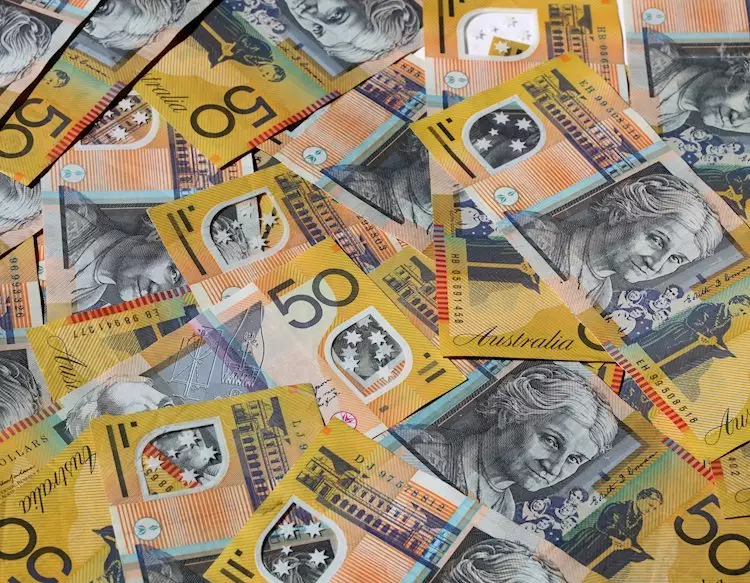As we step into the early Asian trading session of Monday, the AUD/USD currency pair is experiencing subtle losses, hovering around the 0.6605 mark. This decline is largely attributed to a robust US dollar, which is currently buoyed by a variety of economic signals that have emerged recently. The upward movement in the Michigan Consumer Sentiment Index, which surged to 70.5 in October from a previous reading of 68.9, particularly stands out. Such data not only reflects consumer confidence but also has implications for the Federal Reserve’s policy direction, which could favor a stronger dollar in the context of rising interest rates.
The recent performance of the US economy, as evidenced by the Michigan Consumer Sentiment Index, is compelling. Investors had predicted a more muted figure, yet the actual index surpassed expectations, suggesting improved consumer confidence. This could be indicative of sustained economic activity, potentially influencing the Fed to adopt a more cautious stance regarding monetary policy. The expectation for higher interest rates typically strengthens a currency, and the dollar’s resilience against the AUD can be directly linked to these developments.
However, it is essential to consider that other economic indicators have delivered mixed signals. For instance, the recent Durable Goods Orders fell by 0.8% month-on-month, though this was not as stark as the anticipated 1% decrease. Such discrepancies can create uncertainty in market sentiment, where a robust consumer outlook contends with other signs of economic sluggishness.
Adding to the complexity of the AUD/USD relationship is the backdrop of geopolitical tensions. The situation in the Middle East remains delicate, particularly with Israel’s recent military actions being coordinated with the US. The nature of these developments can lead to fluctuations in currency valuation, as investors often gravitate toward safe-haven assets like the dollar during periods of unrest. Consequently, the Australian dollar may exhibit vulnerability under such circumstances, pressured further by international dynamics.
The uncertainties surrounding the upcoming US Presidential election also play a crucial role. With candidates like Donald Trump and Kamala Harris harboring different economic policies and strategies, the potential outcomes could significantly influence market reactions and the dollar’s strength.
Australian Monetary Policy: The RBA’s Dilemma
On the Australian side, the Reserve Bank of Australia’s (RBA) stance could help mitigate the downtrend of the AUD. There has been a growing consensus that the RBA is unlikely to implement rate cuts in the imminent future, with current market pricing suggesting only a 10% probability of such a move by November 5. This hawkish posture from the RBA can provide some support for the AUD against the USD.
Interest rates established by the RBA are a crucial determinant of the AUD’s value, and maintaining higher rates compared to peer central banks typically lends strength to the currency. The RBA’s strategic adjustments aim to control inflation within the target range of 2-3%, using interest rates as a main tool. However, this fine balancing act becomes challenging, particularly when faced with fluctuating global conditions and inflationary pressures.
Another significant factor influencing the Australian dollar is its correlation with commodity prices, predominantly iron ore. As Australia’s largest export, the performance of iron ore directly impacts the AUD’s valuation. China’s economic health, being Australia’s primary trading partner, plays a pivotal role in this context. Rising iron ore prices can bolster demand for the Australian dollar, improving its monetary value. Conversely, if the Chinese economy shows signs of deceleration, this could dilute demand for iron ore and, in turn, weaken the AUD.
Recent data indicated that in 2021, Australia’s iron ore exports brought in approximately $118 billion, underscoring the commodity’s importance. Thus, any fluctuations in iron ore prices tend to reverberate through the economy, impacting the balance of trade and consequently affecting the AUD’s strength.
The AUD/USD pair is caught in a web of various influences ranging from domestic monetary policy shifts and economic data emerging from the US to broader geopolitical tensions and commodity price dynamics. While the Australian dollar may find temporary support through the RBA’s policies, persistent pressures from a strengthening US dollar and external uncertainties suggest that traders should remain vigilant. As market conditions continue to evolve, the AUD’s trajectory will depend significantly on both local economic indicators and the geopolitical climate that shapes investor sentiment globally. It is an intricate landscape that requires continuous monitoring to make informed trading decisions.

